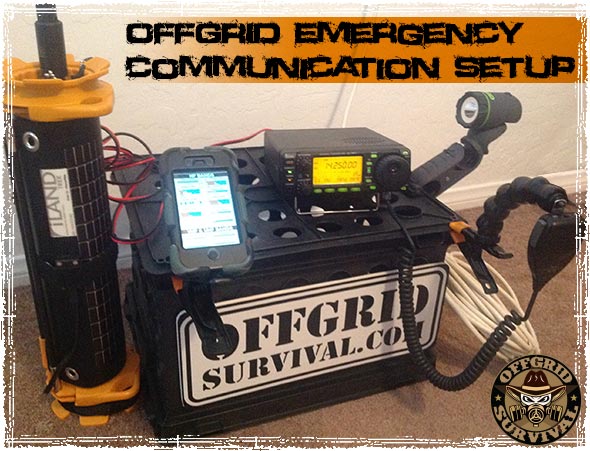
One of the topics that I receive the most email questions about is Off-Grid Communication, specifically Ham Radio. A lot of readers are either confused or want to know why Ham Radio is even relevant in today’s digital age. While advances in technology have definitely caused some to lose interest in the hobby, I believe Ham Radio is even more important today – mainly because of people’s dependence on technologies that are anything but reliable during an emergency.
During a grid down scenario, or even during a short-term disaster where cell towers become clogged by a flood of emergency traffic, Ham Radio is still one of the most reliable forms of communication out there. It’s also something that I turn to on a daily basis for unfiltered news from around the world.
Low Power Communication: How Ham Radio will save you when the Grid Goes Down
One of the main benefits of Ham Radio is its reliability. During a disaster, when other forms of communication have been knocked out, chances are the Ham bands are going to be alive and well.
The video below shows an emergency Ham Radio setup that can help keep communication going even after the grid goes down. The setup can be thrown into a small bag (or milk crate, as seen in the video), and deployed anywhere in the world.
The Radio itself has a number of low-power settings, and can be operated at 10, 5, 2.5, 1 or 0.5 watts of power. It only requires a simple wire antenna to operate (we use a slinky in the video), and can be used to communicate with people from around the globe.
My Off-Grid, Portable Emergency Ham Radio Station
What you see in the video:
The setup is pretty simple, and for the most part (minus the radio, and the solar charger) it can be made with items from around your house.
- Solar Charger: iLAND TREK – Solar Charger & Battery – I can’t find these anymore so I swapped it out for a Jackery Portable Power Station and a Jackery SolarSaga 100W Portable Solar Panel.
- Radio: Icom IC-703 – Radio has been discontinued we now recommend the Icom IC-718 HF. We like the new radio better because we can still run it in a low power mode, and then when we have a consistent source of power we can bump things up.
- Antenna: Simple Slinky Dipole
- Coax: Regular household TV Coax
- Light: Blackfire Clamplight
- Clamps: Nasty Clamps – This is what’s holding the iPhone and the mic in the picture. These clamps are awesome; I use them all the time when filming and I’ve found a ton of uses for them.
For more information on Ham Radio and Emergency Communication, check out these articles:
- Prepper Radio: The No-BS Ham Radio Technician Exam Prep Guide
Your Key to Passing the Amateur Radio Technician License Test and Taking Your Emergency Communication Skills to the Next Level - Emergency Communications When TSHTF
- Ham Radio Cheat Sheet
- Situational Intel: Knowledge is Power during a Crisis
- Ham Radio FAQs
- The ¼ Wave Droopy Ground Plane 2 Meter Antenna




Be the first to comment